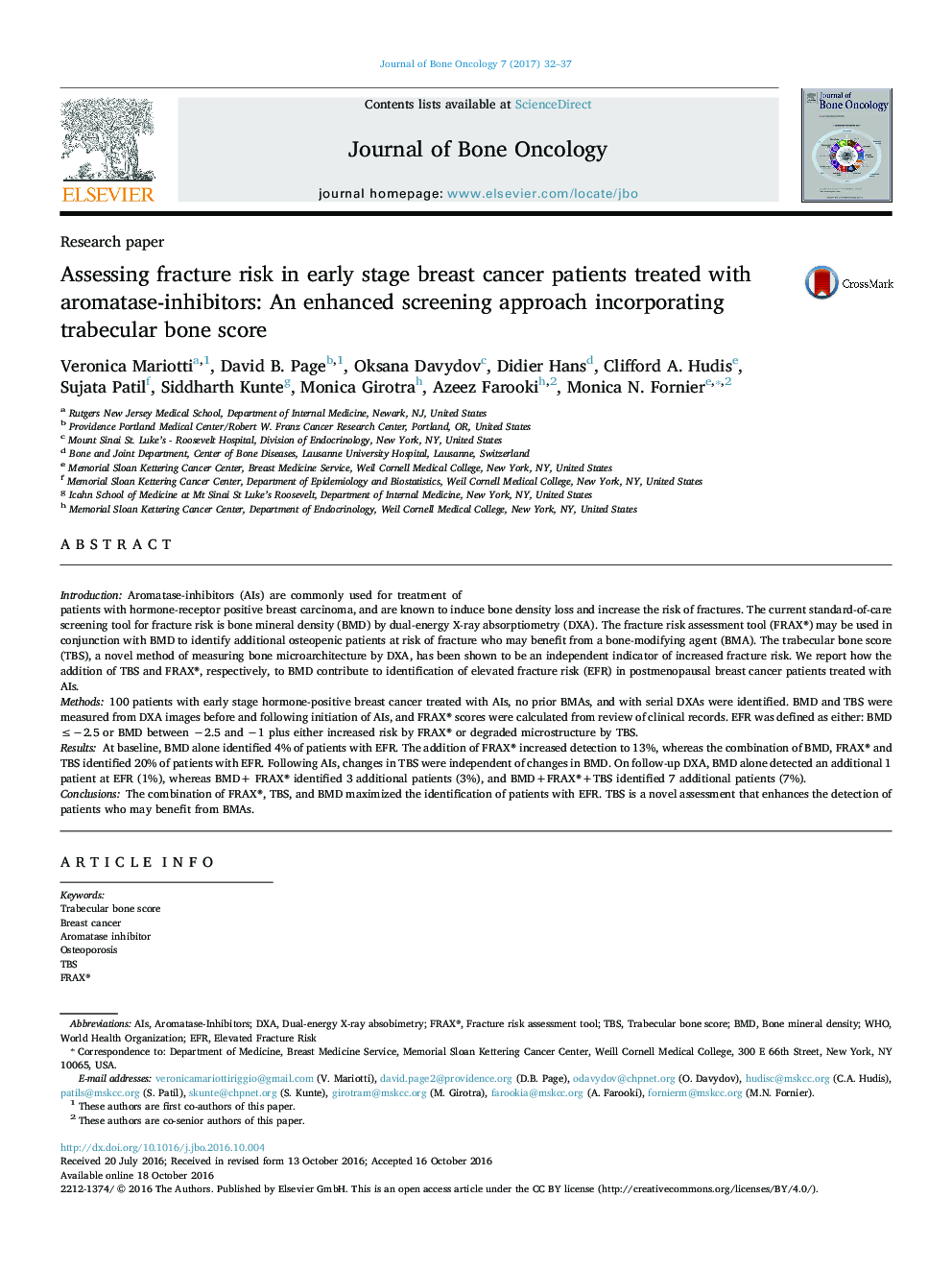| کد مقاله | کد نشریه | سال انتشار | مقاله انگلیسی | نسخه تمام متن |
|---|---|---|---|---|
| 5527678 | 1547860 | 2017 | 6 صفحه PDF | دانلود رایگان |
IntroductionAromatase-inhibitors (AIs) are commonly used for treatment of patients with hormone-receptor positive breast carcinoma, and are known to induce bone density loss and increase the risk of fractures. The current standard-of-care screening tool for fracture risk is bone mineral density (BMD) by dual-energy X-ray absorptiometry (DXA). The fracture risk assessment tool (FRAX®) may be used in conjunction with BMD to identify additional osteopenic patients at risk of fracture who may benefit from a bone-modifying agent (BMA). The trabecular bone score (TBS), a novel method of measuring bone microarchitecture by DXA, has been shown to be an independent indicator of increased fracture risk. We report how the addition of TBS and FRAX®, respectively, to BMD contribute to identification of elevated fracture risk (EFR) in postmenopausal breast cancer patients treated with AIs.Methods100 patients with early stage hormone-positive breast cancer treated with AIs, no prior BMAs, and with serial DXAs were identified. BMD and TBS were measured from DXA images before and following initiation of AIs, and FRAX® scores were calculated from review of clinical records. EFR was defined as either: BMD â¤â2.5 or BMD between â2.5 and â1 plus either increased risk by FRAX® or degraded microstructure by TBS.ResultsAt baseline, BMD alone identified 4% of patients with EFR. The addition of FRAX® increased detection to 13%, whereas the combination of BMD, FRAX® and TBS identified 20% of patients with EFR. Following AIs, changes in TBS were independent of changes in BMD. On follow-up DXA, BMD alone detected an additional 1 patient at EFR (1%), whereas BMD+ FRAX® identified 3 additional patients (3%), and BMD+FRAX®+TBS identified 7 additional patients (7%).ConclusionsThe combination of FRAX®, TBS, and BMD maximized the identification of patients with EFR. TBS is a novel assessment that enhances the detection of patients who may benefit from BMAs.
Journal: Journal of Bone Oncology - Volume 7, June 2017, Pages 32-37
